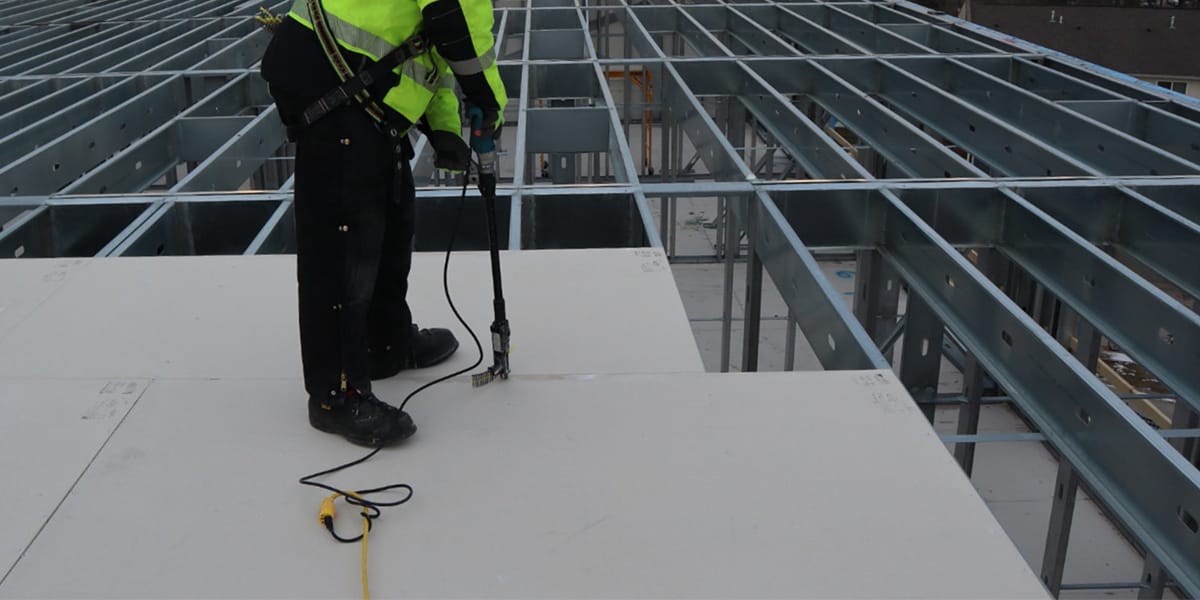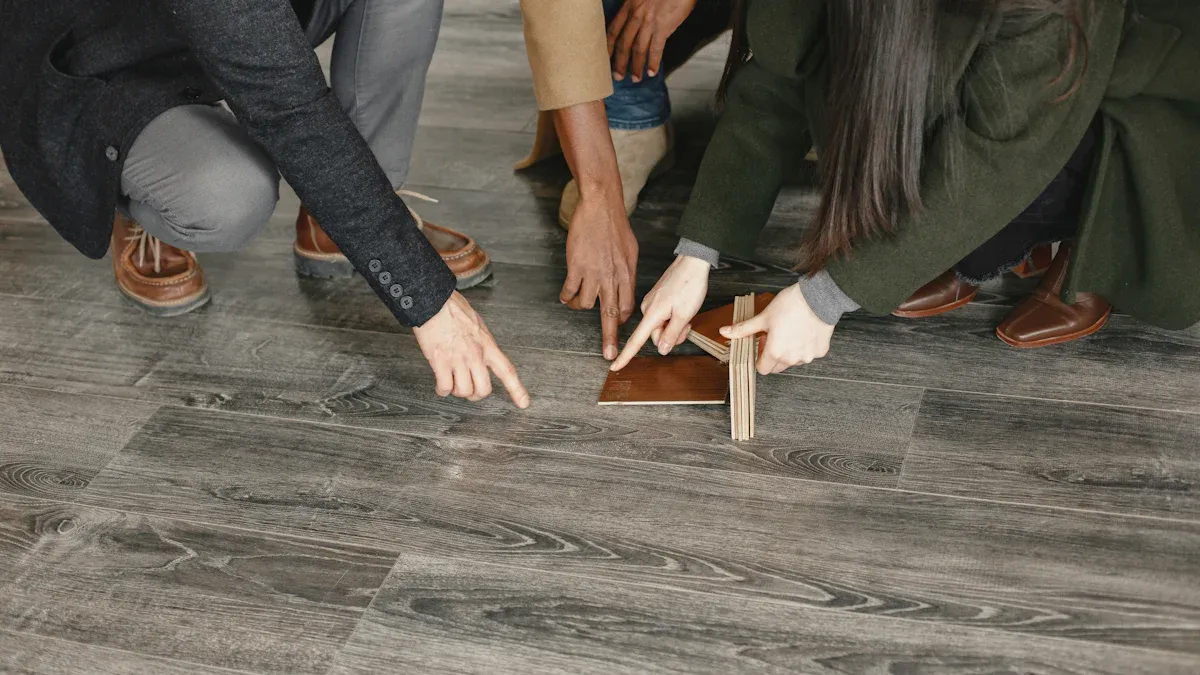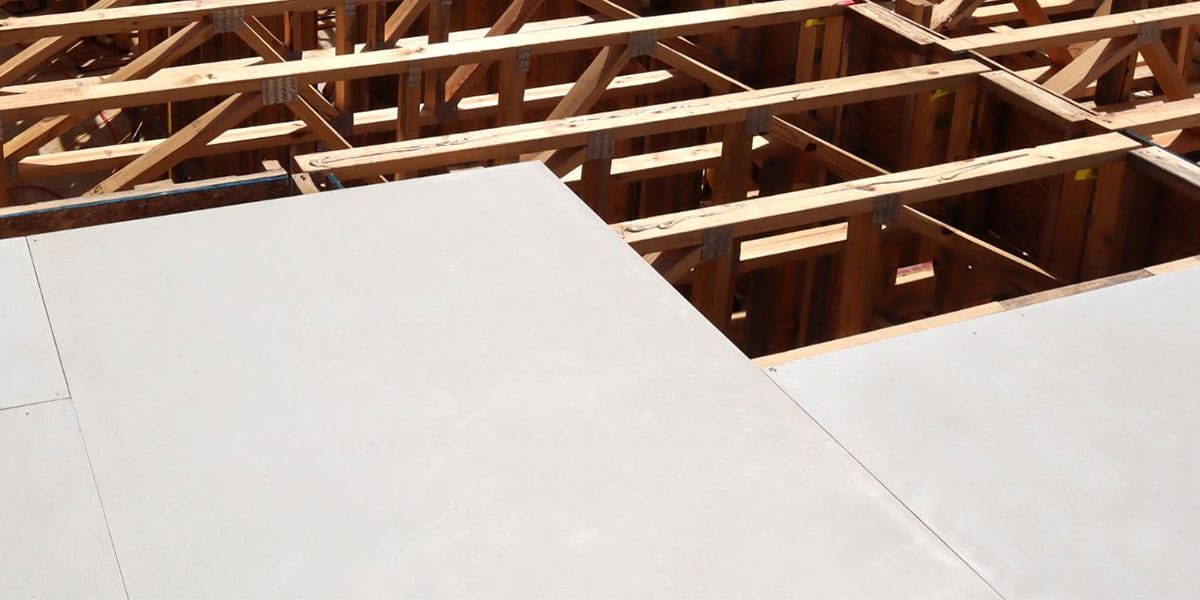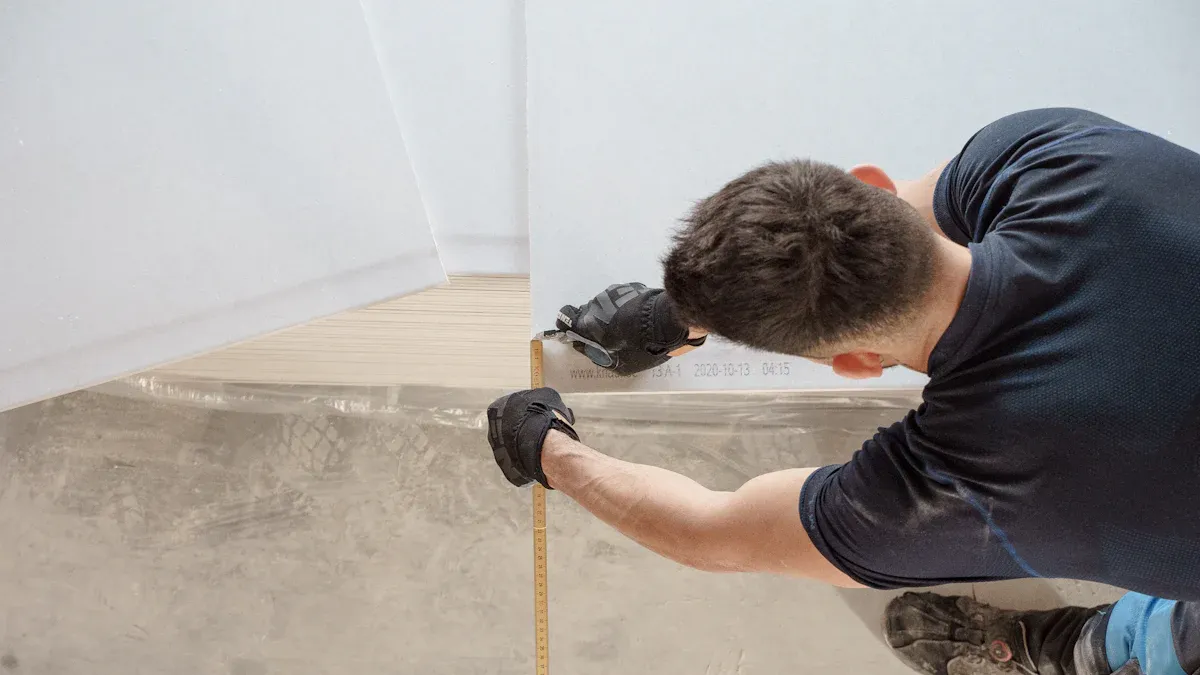
24 Jul How to Choose the Best Waterproof Subfloor Material for Your Home
Table of Contents
You want your floors to last a long time, so choosing the right waterproof subfloor material is important. In bathrooms and basements, MGO board or marine-grade plywood work better with water and help stop things like warping or mold. Moisture resistance keeps your subfloor strong and dry, which helps protect your finished floors from getting damaged. If you pick the right subfloor for each room, your floors will last longer and you will not need as many repairs later.
Key Takeaways
Pick waterproof subfloor materials like MGO board or marine-grade plywood for wet rooms. This helps stop water damage and mold. – Always check for moisture and use vapor barriers. These protect your floors from hidden water problems. – Match your subfloor material to the room’s moisture level and how you use the room. This helps your floors last longer. – Follow the right steps when installing. Clean, level, and seal seams to stop floor damage. – Using the right waterproof subfloor saves money on repairs. It also makes your home worth more.
Why Waterproof Subfloors Matter
Moisture Risks
You might not see moisture right away, but it can cause big problems under your floors. Water sneaks in from many places and damages your subfloor before you even notice. Here are some common ways moisture gets in:
Builders sometimes skip moisture testing or forget to put down vapor barriers, especially over concrete slabs.
Wood-based subfloors like plywood or OSB can soak up water if left outside before installation. This makes them swell or fall apart.
During construction, some crews leave subfloors exposed to rain or humidity. This speeds up damage.
Moisture problems often hide for weeks or months. By the time you spot them, your floor may already be warped or moldy.
Some installers skip important steps like slab prep or moisture checks to save time or money. This leads to long-term floor failures.
Tip: Always ask your installer about moisture testing and vapor barriers. These steps protect your home from hidden water damage.
Benefits
When you choose a waterproof subfloor, you protect your home and your wallet. Waterproof materials like luxury vinyl tile (LVT) or special boards keep water from soaking in. This stops mold, mildew, and rot before they start. You spend less time worrying about repairs and more time enjoying your home.
Waterproof subfloors last much longer than regular ones. For example, waterproof LVT can last 20-30 years, while traditional hardwood may only last 10-15 years. You save money because you do not have to replace or fix your floors as often. Cleaning is easy, too. You just sweep or mop—no need for waxing or special treatments.
Buyers love homes with waterproof floors. These floors look great and stay strong, which can boost your home’s value. If you ever decide to sell, you might get a better price because your floors are built to last. Choosing a waterproof subfloor is a smart move for any room where water might be a problem.
Waterproof Subfloor Material Options
 MGO Board
MGO Board
MGO board is a great pick if you need a waterproof subfloor material for tough spots. This board does not let water in, so it will not swell or let mold grow. It also stops fire and does not make toxic smoke, which keeps your home safer. Builders like that it is light and easy to cut, but you might need special tools to put it in.
Pros:
Eco-friendly and made from natural materials
Strong and durable, even in humid rooms
Cons:
Higher upfront cost than plywood or OSB
Can be brittle, so it does not hold nails as well
May be hard to find in some areas
Tip: MGO board is best for bathrooms, basements, and kitchens. Use it where you worry about water or fire.
Feature | MGO Board |
|---|---|
Moisture Resistance | Completely waterproof |
Durability | Very high |
Cost | Higher upfront, low maintenance |
Best Use | Bathrooms, basements, kitchens |
Marine-Grade Plywood
Marine-grade plywood is another strong choice for a waterproof subfloor material in wet places. This plywood uses waterproof glue and good wood layers, so it stands up to water better than regular plywood. People use it to build boats, but it also works in bathrooms and kitchens.
Pros:
Smooth surface for easy finishing
Cons:
More expensive than standard plywood
Can bend if not supported well
Use marine-grade plywood in bathrooms, kitchens, and laundry rooms. Always seal the edges to keep water out and help it last longer.
Treated Plywood
Treated plywood gets chemicals to fight water, rot, and bugs. If you need a waterproof subfloor material for outside or damp basements, this is a good pick. It can last up to 40 years if you take care of it.
Pros:
Resists water, rot, and insects
Long lifespan with low maintenance
Good for outdoor and high-moisture areas
Cons:
Not stronger than regular plywood, just more durable against the elements
May cost more than untreated plywood
Note: Always wear gloves and a mask when cutting or sanding treated plywood. Keep kids and pets away from sawdust.
OSB
OSB is a cheaper choice for many homes. It takes in water slower than plywood, but it holds onto water longer, which can make it swell. If you use OSB in a wet area, you might get warping, mold, or even buckled floors.
Pros:
Lower cost than plywood or MGO board
Uniform strength and easy to find
Good for dry rooms or areas with low moisture
Cons:
Prone to mold and rot if it gets wet
You can use OSB in living rooms or bedrooms, but do not use it in bathrooms, kitchens, or basements.
Engineered Wood Panels
Engineered wood panels, like engineered hardwood, resist moisture better than solid wood but are not fully waterproof. These panels use layers of wood glued together, which helps them stay strong and not warp. They look nice, but you need to clean up spills fast.
Pros:
Strong and stable, less likely to warp
Easier to install with floating or glue-down methods
Cons:
Needs professional installation for best results
Engineered wood panels work well in living rooms, bedrooms, and kitchens above ground. Do not use them in basements or bathrooms where water is a big risk.
Polyethylene Membranes
Polyethylene membranes are thin plastic sheets that go under your finished floor. You do not use them alone as a subfloor, but they help keep water out of your floor system. These membranes stop almost all water from coming up from concrete or wet ground.
Pros:
Easy to install under tile, vinyl, or laminate
Helps prevent mold and mildew
Cons:
Not a structural subfloor—needs to go under another material
Not suitable as the only layer in your floor system
Tip: Use polyethylene membranes in bathrooms, kitchens, basements, and laundry rooms for extra protection.
Room/Area | Best Material(s) |
|---|---|
Bathroom | MGO Board, Marine-Grade Plywood, Polyethylene Membrane |
Kitchen | MGO Board, Marine-Grade Plywood, Polyethylene Membrane |
Basement | MGO Board, Treated Plywood, Polyethylene Membrane |
Living Room | Engineered Wood Panels, OSB, Plywood |
Laundry Room | Marine-Grade Plywood, Polyethylene Membrane |
Picking the right waterproof subfloor material depends on your room, budget, and how much water you expect. Always match the material to the space for the best results.
Key Factors for Choosing
 Moisture Resistance
Moisture Resistance
Your subfloor should keep out water, especially in wet rooms. Some materials, like ceramic tile and waterproof laminate, do well with spills. They do not get bigger or fall apart when wet. Always check if the product works in wet places. Use moisture barriers to help stop water. Make sure your installer knows how to work in damp rooms. Clean up spills fast and let air move to help your floors last.
Ceramic and porcelain tiles are best for wet rooms.
Waterproof laminate works well in basements and kitchens.
Water-resistant choices can take some water but not a lot.
Durability
You want a subfloor that will last many years. Vinyl tile is great because it does not soak up water. It stays strong even after leaks or floods. Its layers stop it from bending or breaking. Tests show vinyl tile does better than hardwood or carpet in wet rooms. If you want less worry, pick a strong waterproof subfloor material.
Installation
How you put in your floor is very important. If the floor is not flat or steps are missed, you get problems. You might see buckling or mold. Always test for moisture before you start. Use vapor barriers if you need them. Clean and dry the subfloor before you lay anything down. Hiring a pro helps you avoid mistakes and keeps your warranty safe.
Tip: Sealing seams and edges gives more protection from water.
Compatibility
Not every subfloor fits with every finished floor. Check this table to match your materials:
Finished Floor | Best Subfloor Material | Why It Works |
|---|---|---|
Hardwood | Plywood | Stable, stops warping |
Laminate | Plywood, OSB | Smooth, flat base |
Vinyl | Plywood, OSB (with barrier) | Needs moisture protection |
Tile/Stone | Concrete, Cement Board | Hard, moisture-resistant |
Carpet | Plywood, OSB | Smooth, light-duty |
Cost
Think about both the first price and long-term value. Plywood and OSB cost less at first but may need repairs if water gets in. High-performance boards and concrete cost more but last longer and need less fixing. Some options, like treated plywood, can save money over time by stopping mold and water damage.
Choosing the Right Waterproof Subfloor Material

Assess Your Needs
Before you pick a waterproof subfloor material, take a close look at your home and your goals. Ask yourself these questions:
Do you have rooms that get wet often, like bathrooms or basements?
Is your area humid or dry most of the year?
Do you want a floor that lasts a long time with little repair?
Are you worried about mold or water damage?
What is your budget for this project?
You should also check your current subfloor. Look for signs of water damage, mold, or weak spots. Use a moisture meter if you can. Make sure the surface is clean and level. If you skip this step, you might have problems later.
Tip: Always match your subfloor choice to your room’s needs. Some materials work better in wet places, while others are best for dry rooms.
Match Material to Room
Each room in your house has different needs. Bathrooms, laundry rooms, and basements need strong moisture protection. Kitchens and entryways see lots of spills and foot traffic. Living rooms and bedrooms stay drier, so you have more options.
Room/Area | Best Subfloor Choices | Avoid These Materials |
|---|---|---|
Bathroom | Laminate, carpet, hardwood | |
Kitchen | MGO board, marine-grade plywood, membrane | Carpet, solid hardwood |
Basement | Treated plywood, MGO board, membrane | Laminate, OSB |
Entryway | Marine-grade plywood, membrane | Carpet, laminate |
Living Room | Engineered wood panels, plywood | Carpet in damp climates |
Choose a waterproof subfloor material that matches the room’s moisture level and use. For high-moisture areas, always use a moisture barrier under your subfloor.
Step-by-Step Guide
Follow these steps to get the best results:
Remove old flooring and clean the area.
Inspect the joists and subfloor for damage or rot. Repair if needed.
Test for moisture using a meter.
Make sure the floor is level.
Measure and cut your new subfloor sheets, leaving small gaps for expansion.
Dry fit the pieces to check the fit.
Secure the subfloor with screws or nails.
Apply a waterproof membrane or sealant, focusing on seams and edges.
Let everything dry fully before adding your finished floor.
Note: Let your flooring sit in the room for 48–72 hours before installing. This helps it adjust to the room’s humidity and prevents buckling.
You can pick from many waterproof subfloor materials. Vinyl is best for wet places like bathrooms and basements. Plywood works in most rooms in your house. OSB is good for rooms that stay dry. Concrete is strong and handles water and heavy use. Look at this table to see how they compare:
Material | Best Use | Pros | Cons |
|---|---|---|---|
Vinyl | Wet areas | Waterproof, easy fix | Needs prep |
Plywood | Most rooms | Durable, versatile | Needs sealing |
OSB | Dry areas | Cheap, strong | Not for wet spots |
Concrete | Basements, heavy use | Tough, moisture-safe | Hard, cold |
Make sure you know what you need. Compare each material’s features. Follow the steps in the guide to get the best floor.
FAQ
What is the most waterproof subfloor material?
MGO board gives you the best waterproof protection. It does not let water in, so you do not have to worry about swelling or mold. You can use it in bathrooms, kitchens, and basements for peace of mind.
Can I install a waterproof subfloor by myself?
You can install some materials, like plywood or OSB, if you have basic tools. For MGO board or membranes, you might want a pro. They know how to seal seams and check for moisture.
Do I need a moisture barrier under my subfloor?
You should use a moisture barrier in any room that gets wet, like bathrooms or basements. It keeps water from reaching your subfloor and helps your floors last longer.
How do I know if my subfloor has water damage?
Look for soft spots, musty smells, or stains. If your floor feels bouncy or you see mold, you probably have water damage. You can use a moisture meter to check for hidden problems.

 MGO Board
MGO Board Moisture Resistance
Moisture Resistance